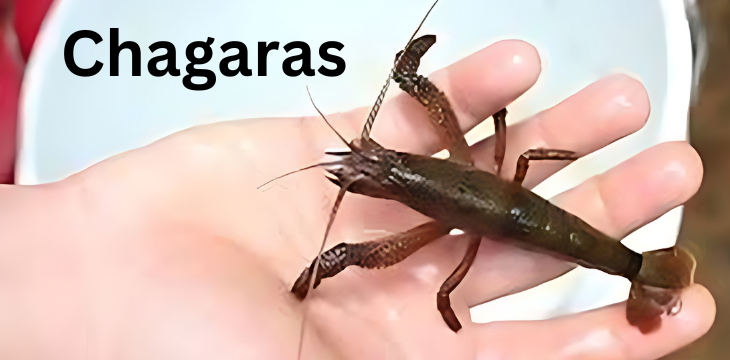Nestled in the heart of an uncharted corner of the world, Chagaras is a gem of natural beauty and cultural richness that has long eluded mainstream exploration. This secluded paradise, often described as a hidden treasure, offers a unique blend of breathtaking landscapes, diverse ecosystems, and vibrant local traditions. In this comprehensive guide, we delve into the wonders of Chagaras, unveiling the many facets that make it a destination worth discovering.
The Geography of Chagaras
Chagaras is situated in a remote region that borders several countries, though its exact location remains somewhat elusive due to its protected status. The geography of Chagaras is defined by its dramatic terrain, which includes lush rainforests, rolling hills, and pristine rivers. The area’s topography creates a stunning contrast between the verdant, lowland forests and the rugged, highland areas.
The climate of Chagaras is equally diverse. The lowlands experience a tropical climate with high humidity and regular rainfall, fostering an environment where vibrant flora and fauna thrive. In contrast, the highland regions boast a temperate climate with cooler temperatures and mist-covered landscapes. This climatic variation contributes to the rich biodiversity found throughout Chagaras.
Flora and Fauna
One of the most captivating aspects of Chagaras is its incredible biodiversity. The region is home to a wide array of plant and animal species, many of which are endemic to the area. The dense rainforests are a haven for exotic plants, including towering trees with broad canopies, colorful orchids, and medicinal herbs used by the local communities.
Animal life in Chagaras is equally remarkable. The rainforests are alive with the calls of exotic birds, such as the vibrant Scarlet Macaw and the elusive Harpy Eagle. Mammals, including the endangered jaguar and the playful spider monkey, roam the forest floor and treetops. Reptiles and amphibians, such as the brilliantly colored poison dart frogs, add to the region’s allure.
Chagaras also boasts unique aquatic life. Its rivers and lakes are inhabited by species like the Amazonian manatee and various types of freshwater fish, including the formidable piranha. The interplay of these diverse ecosystems makes Chagaras a paradise for nature enthusiasts and researchers alike.
Indigenous Cultures and Traditions
The cultural tapestry of Chagaras is as rich as its natural environment. The region is home to several indigenous communities, each with its own distinct traditions and way of life. These communities have lived in harmony with the land for centuries, developing a deep understanding of the local environment and its resources.
One of the most striking aspects of Chagaras’s indigenous cultures is their traditional knowledge of medicinal plants. Herbal remedies passed down through generations are still used today to treat a variety of ailments. Visitors to Chagaras have the opportunity to learn about these traditional practices from local healers, gaining insight into the profound relationship between the indigenous people and their surroundings.
The cultural practices of Chagaras’s indigenous communities are also expressed through vibrant festivals and rituals. These celebrations often feature traditional music and dance, elaborate costumes, and intricate crafts. Attending one of these festivals provides a window into the rich heritage and artistic expression of the local people.
Adventure and Exploration
For those with a thirst for adventure, Chagaras offers a wealth of opportunities for exploration and outdoor activities. The region’s diverse landscapes provide the perfect backdrop for hiking, trekking, and wildlife spotting. Trails wind through the rainforests and up into the highlands, offering stunning vistas and encounters with rare and exotic species.
River expeditions are another popular activity in Chagaras. Paddling along the region’s pristine waterways allows visitors to experience the beauty of the aquatic ecosystems and spot wildlife such as river dolphins and caimans. For a more immersive experience, guided tours led by local experts offer a chance to learn about the region’s natural history and conservation efforts.
Chagaras is also an ideal destination for eco-tourism. Many lodges and tour operators in the area are committed to sustainable practices and conservation efforts. Staying at an eco-lodge not only minimizes your impact on the environment but also supports the local communities that work to protect this precious land.
Conservation Efforts
Given its ecological significance and unique biodiversity, Chagaras is the focus of several conservation initiatives. The region’s remote location has helped shield it from some of the pressures faced by more accessible areas, but challenges such as deforestation and climate change still pose threats.
Conservation organizations are working tirelessly to preserve Chagaras’s natural habitats and protect its wildlife. Efforts include monitoring endangered species, restoring degraded areas, and promoting sustainable practices among local communities. These initiatives are crucial in ensuring that Chagaras remains a sanctuary for future generations.
Visitors to Chagaras can contribute to these conservation efforts by supporting eco-friendly businesses, participating in guided tours that emphasize sustainability, and respecting the local environment. Every small action helps in preserving the beauty and biodiversity of this remarkable region.
Conclusion
Chagaras is a land of wonders, offering a rare glimpse into a world where nature and culture coexist in perfect harmony. Its diverse landscapes, rich biodiversity, and vibrant indigenous cultures make it a destination that appeals to adventurers, nature lovers, and cultural enthusiasts alike. As the world continues to change, the importance of preserving and protecting places like Chagaras becomes ever more apparent.
FAQS
1. What is “Unraveling the Wonders of Chagaras: A Comprehensive Guide”?
- This guide is an in-depth exploration of the Chagaras, an intriguing and lesser-known topic. It provides detailed information on their history, culture, geography, and significance, offering readers a thorough understanding of Chagaras.
2. Who is the target audience for this guide?
- This guide is intended for anyone interested in learning about Chagaras, including students, researchers, and enthusiasts of unique cultural and historical topics. It is suitable for both beginners and those with prior knowledge.
3. What topics does the guide cover?
- The guide covers a wide range of topics, including:
- Historical background and origins of Chagaras
- Cultural practices and traditions
- Geographical locations and significant landmarks
- Notable figures and their contributions
- Current relevance and impact
4. How is the information presented in the guide?
- The guide is presented in a structured format with clear headings and subheadings. It includes detailed explanations, illustrations, maps, and case studies to enhance understanding. The content is organized to facilitate easy navigation and reference.
5. Are there any special features in the guide?
- Yes, the guide includes:
- Interactive maps and infographics
- Interviews with experts and locals
- A glossary of terms related to Chagaras
- Recommended reading and resources for further exploration
6. Is the guide available in digital format?
- Yes, the guide is available in both print and digital formats. The digital version can be accessed on various e-reader platforms and includes interactive elements.
7. How can I purchase or access the guide?
- The guide can be purchased through major online retailers, bookstores, and directly from the publisher’s website. The digital version can be downloaded from e-book platforms or accessed via the publisher’s online store.
8. Can I use the guide for academic or research purposes?
- Absolutely. The guide is well-researched and includes references and citations that make it a valuable resource for academic and research purposes. You may also find appendices with additional data and sources.
9. Are there any supplementary materials available?
- Yes, supplementary materials such as study guides, presentation slides, and additional articles are available for educators and researchers. These can be obtained from the publisher’s website or by contacting their support team.
10. Who authored the guide, and what are their credentials?
- The guide is authored by [Author’s Name], an expert in the field with extensive knowledge and experience related to Chagaras. [Author’s Name] has published several works on related topics and has been involved in research and fieldwork.
11. How can I provide feedback or ask questions about the guide?
- Feedback and questions can be submitted through the publisher’s website or by contacting their customer support. Additionally, the guide may include contact information for the author for direct inquiries.
12. Are there any upcoming events or discussions related to the guide?
- Information about upcoming events, such as book launches, lectures, and discussions, can be found on the publisher’s website or through social media channels associated with the guide.
13. Will there be updates or new editions of the guide?
- Updates and new editions may be released to reflect new research or developments related to Chagaras. Information about future editions will be announced on the publisher’s website.
14. How can I get involved or contribute to the study of Chagaras?
Readers interested in contributing can explore volunteer opportunities, research collaborations, or local events related to Chagaras. The guide may also provide suggestions for involvement and further engagement with the topic.

 Lifestyle7 months ago
Lifestyle7 months ago
 Lifestyle6 months ago
Lifestyle6 months ago
 Business7 months ago
Business7 months ago
 Fashion7 months ago
Fashion7 months ago
 Celebrity7 months ago
Celebrity7 months ago
 Health7 months ago
Health7 months ago
 Tech7 months ago
Tech7 months ago
 Business6 months ago
Business6 months ago



